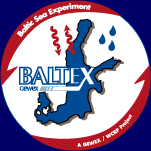|
|
|
|
7th Study Conference on BALTEX
Borgholm, Island of Öland, Sweden, 10 to 14 June 2013
|
|
Conference Summary
|
|
The 7th Study Conference on BALTEX took place on the Swedish island of Öland from 10-14 June 2013. As usual, a large Baltic Sea island was chosen for the venue, and with Öland we returned to Sweden where the first BALTEX Study Conference took place 1995 (on Gotland). This was the final BALTEX conference, completing the circle. As of this conference, BALTEX is terminated and the new Baltic Sea research network Baltic Earth inherits the BALTEX network, infrastructure and scientific legacy. |
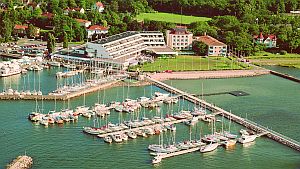
|
The Opening
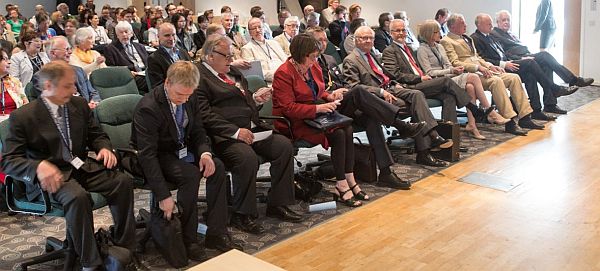 H.M. King Carl XVI Gustaf, King of Sweden honored the morning sessions on Monday (opening ceremony and opening session) with his presence. Local host and former BALTEX Science Steering Group chairman Joakim Langner opened the conference. Welcome addresses were given by Lena Häll Eriksson, Director General of the Swedish Meteorological and Hydrological Institute (SMHI), Stefan Carlsson, County Administrative Board Kalmar, Jan Erici, Chair of the Borgholm Municipality City Council, and Ian A. Nicolls, Dean and Deputy Pro-vice Chancellor at Linnaeus University Kalmar. H.M. King Carl XVI Gustaf, King of Sweden honored the morning sessions on Monday (opening ceremony and opening session) with his presence. Local host and former BALTEX Science Steering Group chairman Joakim Langner opened the conference. Welcome addresses were given by Lena Häll Eriksson, Director General of the Swedish Meteorological and Hydrological Institute (SMHI), Stefan Carlsson, County Administrative Board Kalmar, Jan Erici, Chair of the Borgholm Municipality City Council, and Ian A. Nicolls, Dean and Deputy Pro-vice Chancellor at Linnaeus University Kalmar.
The opening session was dedicated to overview presentations on the history of BALTEX. Firstly, Anders Omstedt gave a brief overview over 20 years of BALTEX research, then Sirje Keevallik demonstrated the significance of BALTEX for bringing together the scientific communities, ideas and data at both sides of the former iron curtain. Mikhail Durkin from the HELCOM Secretariat showed the environmental challenges for the Baltic Sea and Hans von Storch demonstrated the results of the BACC Assessments on climate change in the Baltic Sea area. Finally, Markus Meier introduced the new programme to succeed BALTEX. Following his presentation, the new name and logo were uncovered. |
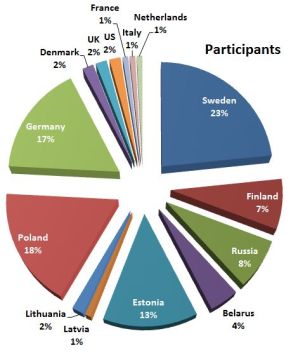 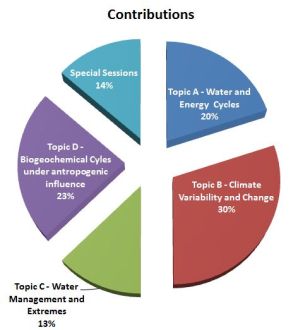
Participation and contributions
The conference was attended by 120 participants from 14 countries, mostly from states in the Baltic Sea basin: Sweden, Finland, Russia, Belarus, Estonia, Latvia, Lithuania, Poland, Germany and Denmark, but also from other countries such as the Netherlands, France, Italy, UK and the US.
In total, 110 contributions were presented, with 65 oral and 45 presentations posters, spanning the scope of BALTEX research: water and energy cycles, climate variability and change, water management and extremes, and biogeochemical cycles under anthropogenic influence. Most of the contributions addressed cross-discipline topics, underlining the interdisciplinary nature of the conference and BALTEX in general. |
The launch of Baltic Earth
The name of the new programme stands for Earth system science in the Baltic Sea region. The logo is new but still immediately recognizable as BALTEX descendant. The new colours light and dark blue and green symbolize the atmosphere, the sea and the land surface; the arrows stand for the fluxes between these compartments. The name and logo was unveiled at Monday noon in the presence of The King of Sweden.
On Wednesday morning, a scientific session was dedicated to Baltic Earth. The international perspective was presented by Jan Polcher, co-chairman of the GEWEX Hydroclimatological Panel (GHP) and Martin Visbeck from the Future Earth initiative. Then, Anna Rutgersson, vice-chair of the Baltic Earth Interim SSG presented the Grand Challenges which had been proposed by the WG on PostBALTEX, and Marcus Reckermann presented outreach and education prospects for Baltic Earth, together with examples from BALTEX. Following the presentations, there was a panel discussion on the prospects of Baltic Earth. |
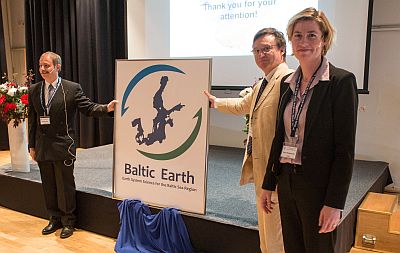 |
Scientific sessions
The conference structure largely followed the first four scientific objectives of BALTEX Phase II. Next to the topical sessions, there were sessions on finalized BONUS+ projects, GEWEX GHP contributions and a panel discussion on Baltic Earth which was introduced by two presentations of the global programmes GEWEX and Future Earth. The scientific conference contents can be tracked in detail on the conference website through the presentations which are available here, and the downloadable conference proceedings which feature extended abstracts (2 p with figures) of all conference contributions.
Social programme
An excursion to the southern part of the island was organized on Tuesday afternoon, with the support of Marie-Jose Gaillard and Geoffrey Lemdahl from Kalmar University. Thus, participants received a professional overview over the geological, ecological and historical features of the island. The excursion stopped at several landmarks, e.g. the Store Alvaret on central southern Öland, and the southern tip of the island where we had a sunny picnic.
The conference dinner took place on Borgholm slot, the medieval castle above Borgholm. A guide gave an introduction to the history of the castle, and the dinner was accompanied by live music. |
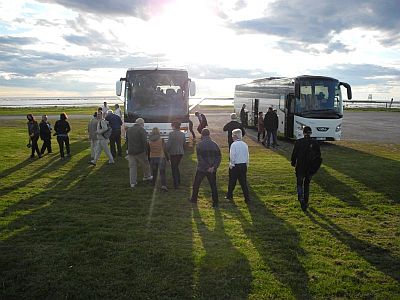 |
BALTEX Awards
Prior to the dinner, selected outstanding personalities from the BALTEX community were honored with a Certificate of Excellence, connected with a free admission to the first Baltic Earth conference. The persons to receive the award are (alphabetically): Lennart Bengtsson, Sten Bergström, Jerzy Dera, Ragnar Elmgren, Hartmut Grassl, Hans-Jörg Isemer, Silke Köppen, Jarmo Koistinen, Joakim Langner, Daniel Michelson, Ehrhard Raschke, Markku Rummukainen, Bernd Schneider, Timo Vihma and Valery Vuglinsky. All these people were honoured for their outstanding achievements for the BALTEX community and science in general. Click here for photos of the ceremony.
At this conference, all former and current BALTEX Science Steering Group chairpersons were present (right, left to right): Anders Omstedt, Hartmut Graßl, Ehrhard Raschke, Lennart Bengtsson, Hans von Storch, Sirje Keevallik and Joakim Langner. |
 |
GeoDome
A special outreach highlight was the GeoDome of SMHI. This inflatable, planetarium-like dome provides a new way to communicate findings of climate and environmental research in the Baltis Sea area. The dome was presented to the King of Sweden on the first day, and to conference participants during the whole duration of the conference. On Tuesday afternoon, the public was invited to get insights to current research findings. Specifically, results from the BONUS-BALTEX project ECOSUPPORT were shown, giving an impression of the possible combined effects of climate change and eutrophication on the Baltic Sea.
Feedback
Conference participants were asked to give feedback on the organisatorial aspects of the conference. Of the 125 participants, 48 filled in and returned a questionnaire. Of those who answered, more than 90% considered the scientific BALTEX topics adequately covered (94%), topics well sorted into sessions (94%), and the length of the presentations (91%), sessions (90%) and health breaks (96%) OK. Lunch breaks were considered too short by 12%, but OK by 86%. The poster session was considered too crowded and too short by 17% each, OK by 66%. When asked how future conferences should be, 25% answered they should be shorter (75% OK as is), 24% said that stakeholders should be more involved (76% not), 25% said the conference should have one specific topic (75% not), and 35% thought that a different frequency than every 3 years would be a good thing (65% to keep current frequency). Of those who wanted a different frequency, 86% opted for a 2 year frequency.
The results of this little survey demonstrate that the overall organisatorial scheme of the BALTEX conference proves to be well received, with some minor changes to be discussed.
Back to the Aftermath page |
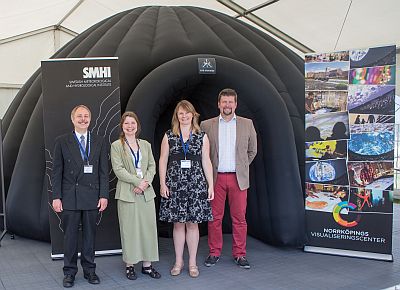 |
|
|
|
